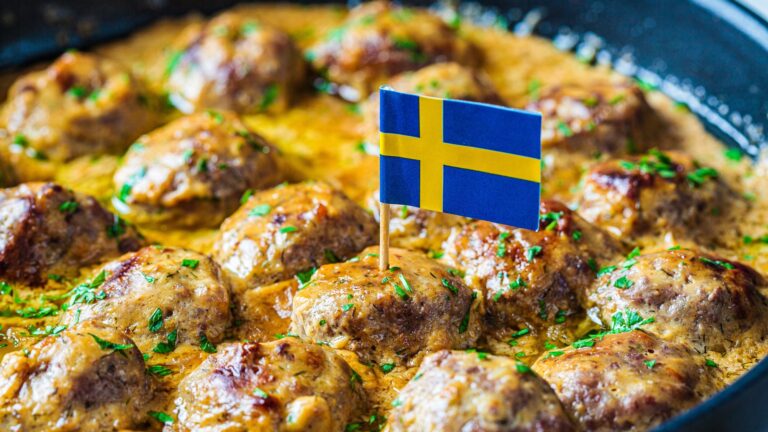Introduction: Exploring Swedish Cuisine
Swedish cuisine is characterized by its simplicity, freshness, and the use of locally sourced ingredients. It has a rich history and is deeply influenced by the country’s geography, climate, and culture. Swedish cuisine is often associated with meatballs, salmon, and potatoes, but there is more to it than these popular dishes.
Traditional Swedish Dishes
Traditional Swedish cuisine is based on simple, hearty, and wholesome dishes that have been passed down from generation to generation. Some of the most iconic Swedish dishes include meatballs with lingonberry jam, gravlax (cured salmon), pea soup with pork, and pickled herring. These dishes are typically served with potatoes, bread, and dill. Swedish cuisine also includes a variety of bread, both sweet and savory, such as limpa bread, crispbread, and cinnamon buns.
The Role of Ingredients in Swedish Cooking
The ingredients used in Swedish cooking are largely influenced by the country’s geography and climate. Sweden’s long coastline provides an abundance of seafood, such as salmon, herring, and crayfish. The country’s forests are rich in berries, mushrooms, and game, while the fertile farmland produces potatoes, root vegetables, and dairy products. The use of fresh, locally sourced ingredients is at the heart of Swedish cooking, and many traditional dishes are made with simple, whole foods.
Influences on Swedish Cuisine
Swedish cuisine has been influenced by a variety of cultures throughout its history. The Vikings, who were known for their seafaring and trading, brought new ingredients and techniques to Sweden, such as salted fish and fermented foods. Later, in the 17th and 18th centuries, French cuisine became popular among the Swedish aristocracy, leading to the introduction of more elaborate and refined dishes. Today, Swedish cuisine continues to evolve and is influenced by global food trends and multiculturalism.
Unique Swedish Dishes
While Swedish cuisine shares many similarities with other Scandinavian countries, there are some dishes that are unique to Sweden. One such dish is “surströmming,” which is fermented herring that is typically eaten with potatoes and onions. Another unique dish is “blodpudding,” a type of black pudding made from pork blood, flour, and spices that is often served with lingonberry jam and fried bacon. Other unique Swedish dishes include “kroppkakor,” potato dumplings filled with pork or bacon, and “smörgåstårta,” a savory sandwich cake made with layers of bread, cheese, and toppings.
Conclusion: The Importance of Preserving Culinary Heritage
Swedish cuisine is an important part of the country’s cultural heritage and should be preserved and celebrated. While there are many unique Swedish dishes, it is also important to remember and honor the traditional dishes that have been passed down through generations. By valuing and promoting Swedish cuisine, we can help preserve and promote the country’s rich culinary heritage for future generations to enjoy.

